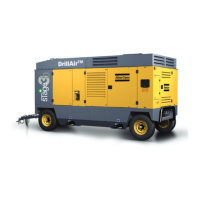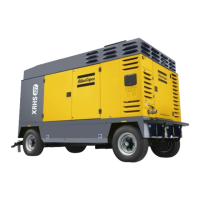- 66 -
Battery care
If the battery is still dry, it must be activated as described
in section Activating a dry-charged battery.
The battery must be in operation within 2 months from
being activated; if not, it needs to be recharged first.
ELECTROLYTE
Electrolyte in batteries is a sulphuric acid solution in
distilled water.
The solution must be made up before being introduced
into the battery.
ACTIVATING A DRY-CHARGED BATTERY
• Take out the battery.
• Battery and electrolyte must be at an equal tempera-
ture above 10 °C (50 °F).
• Remove cover and/or plug from each cell.
• Fill each cell with electrolyte until the level reaches
the mark on the battery. If there is no mark on the
battery, the level must be above the plates for at least
10 mm (0.4 in) to 15 mm (0.6 in).
• Rock the battery a few times so that possible air bub-
bles can escape; wait 10 minutes and check the level
in each cell once more; if required, add electrolyte.
• Refit plugs and/or cover.
• Place the battery in the compressor.
RECHARGING A BATTERY
Before and after charging a battery, always check the
electrolyte level in each cell; if required, top up with
distilled water only. When charging batteries, each cell
must be open, i.e. plugs and/or cover removed.
Preferably use the slow charging method and adjust the
charge current according to the following rule of thumb:
Battery capacity in Ah divided by 20 gives safe charging
current in Amp.
MAKE-UP DISTILLED WATER
The amount of water evaporating from batteries is largely
dependant on the operating conditions, i.e. temperatures,
number of starts, running time between start and stop,
etc...
If a battery starts to need excessive make-up water, this
points to overcharging. Most common causes are high
temperatures or a too high voltage regulator setting.
If a battery does not need any make-up water at all over a
considerable time of operation, an undercharged battery
condition may be caused by poor cable connections or a
too low voltage regulator setting.
PERIODIC BATTERY SERVICE
• Keep the battery clean and dry.
• Keep the electrolyte level at 10 to 15 mm above the
plates or at the indicated level; top up with distilled
water only. Never overfill, as this will cause poor
performance and excessive corrosion.
• Record the quantity of distilled water added.
• Keep the terminals and clamps tight, clean, and light-
ely covered with petroleum jelly.
• Carry out periodic condition tests. Test intervals of 1
to 3 months, depending on climate and operating
conditions, are recommended
If doubtful conditions are noticed or malfunctions arise,
keep in mind that the cause may be in the electical system,
e.g.loose terminals, voltage regulator maladjusted, poor
performance of compressor, etc...
Compressor element overhaul
When a compressor element is due for overhaul, it needs
to be done by Atlas Copco. This guarantees the use of
genuine parts and correct tools with care and precision.
Before handling batteries, read the relevant
safety precautions and act accordingly.
Read the safety instructions carefully.
Always pour the sulphuric acid carefully
into the distilled water; never pour the
water into the acid.
Use a commercial automatic battery
charger in accordance with the
manufacturer’s instructions.

